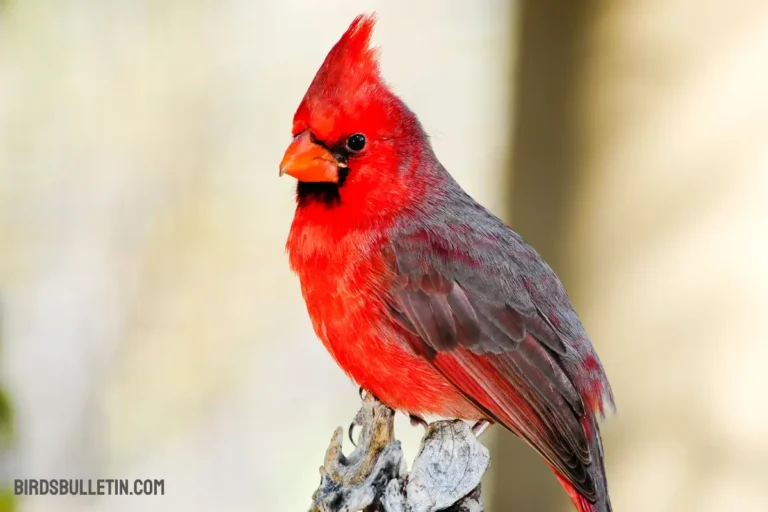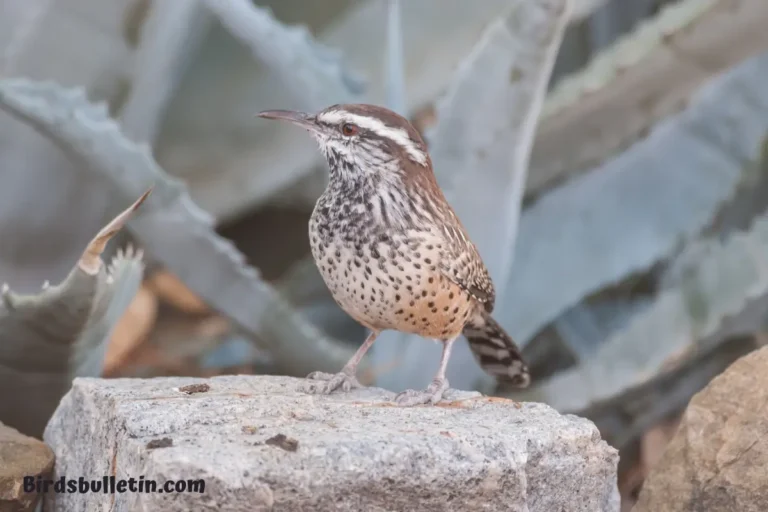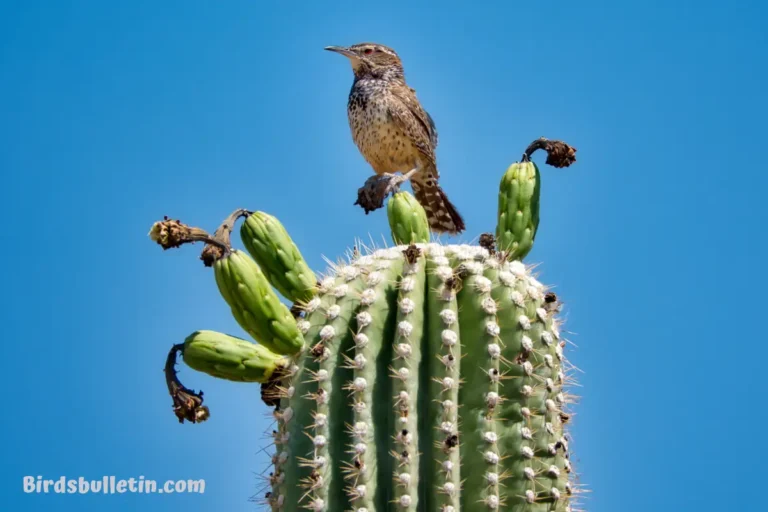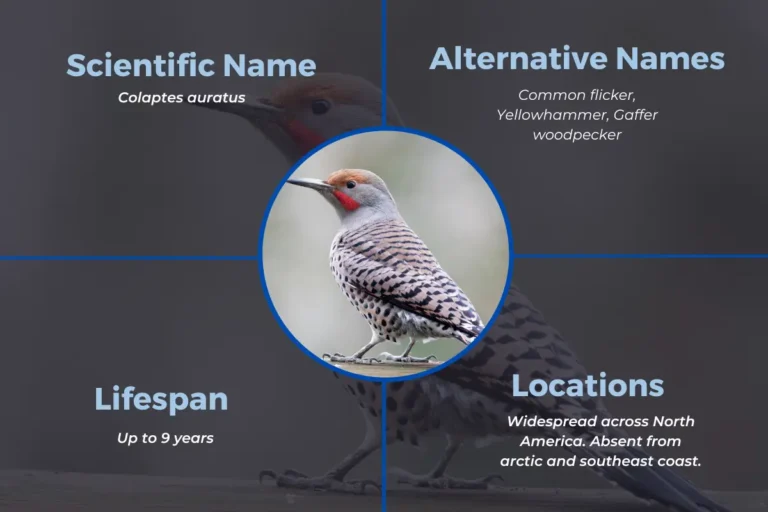Yellow And Red Shafted Flicker Overview
Yellow-shafted flickers (Colaptes auratus auratus) and red-shafted flickers (Colaptes auratus cafer) are two subspecies of the Northern Flicker, a species of woodpecker found in North America.
While they share many similarities, they also have distinct differences in their appearance and habitat. Therefore, birdwatchers and ornithologists distinguish between the two subspecies.
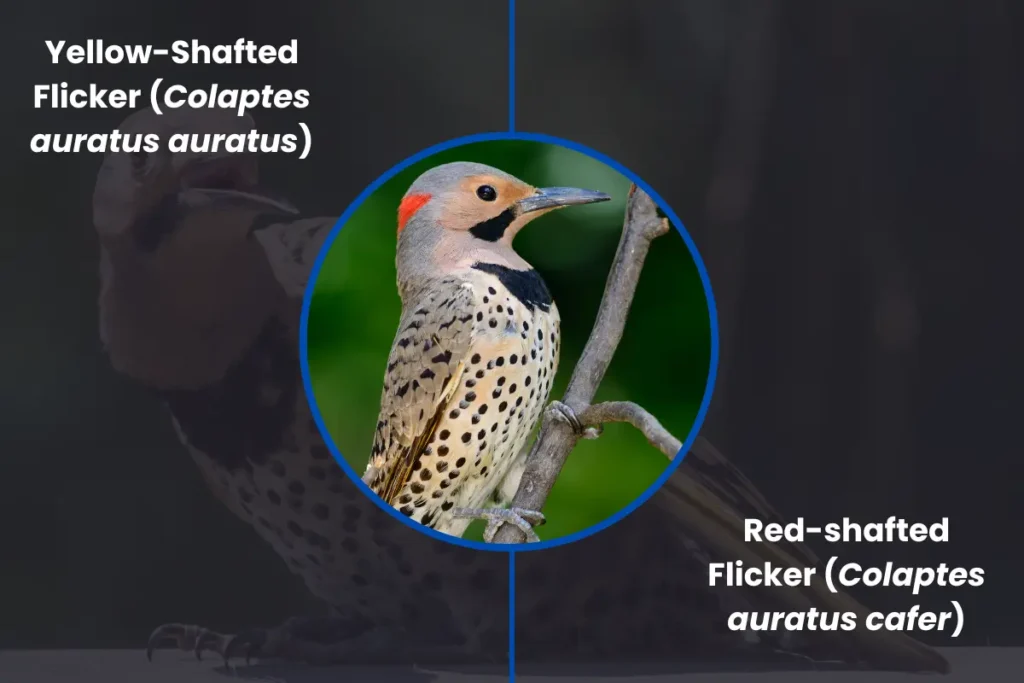
Want to learn more about bird Subspecies:
Yellow-Shafted Flicker (Colaptes Auratus Auratus)
Appearance
Yellow-shafted flickers have yellow feathers under their wings and tail, which are visible during flight. They have a gray cap, a beige face, and a black crescent on their chest. Males have a black mustache mark, while females lack this feature.
Habitat
Yellow-shafted flickers are commonly found in eastern North America. They prefer open woodlands, parks, gardens, and urban areas.
Call
Their calls are characterized by a loud, clear “wicka wicka” sound, often repeated several times.
Subspecies
There are four more subspecies found under Yellow-shafted flicker. Such as:
01. The southern yellow-shafted flicker: This subspecies is known by the common name “Yellowhammer” in Alabama.
02. The northern yellow-shafted flicker: Resides in Central Alaska, Canada, and the northeastern United States.
03. The Cuban yellow-shafted flicker: In Cuba, this subspecies is restricted.
04. The Grand Cayman yellow-shafted flicker: Named after Cuban naturalist Juan Gundlach.
Red-shafted Flicker (Colaptes auratus cafer):
Appearance
Red-shafted flickers have red or salmon-colored feathers under their wings and tail, visible during flight. They have a gray cap, a beige face, and a black crescent on their chest. Males have a red mustache mark, while females lack this feature.
Habitat
Red-shafted flickers are primarily found in western North America, including the western United States, Canada, and parts of Central America. They inhabit open woodlands, deserts, and mountainous regions.
Call
Their calls are similar to the yellow-shafted flickers, consisting of a series of loud, rhythmic “wicka” notes.
Subspecies
There were a total of six subspecies of this bird. Sadly, one Is now extinct. Those are:
01. The Western red-shafted flicker: Located in western North America.
02. The coastal red-shafted flicker: They Closely overlap with the West Coast of North America from British Columbia.
03. The dwarf red-shafted flicker: Inhabits in western Texas to northeastern Mexico.
04. The Mexican red-shafted flicker: Lives in central and southern Mexico.
05. The Guatemalan red-shafted flicker: Some authorities considered it to be a separate species.
06. The Guadalupe red-shafted flicker: It was last recorded in 1906.
Differences between Yellow-Shafted and Red-Shafted Flickers:
Research has revealed key differences between the flickers:
Wing and Tail Color
The most prominent difference between the two subspecies is the color of the feathers under their wings and tail. Yellow-shafted flickers have yellow feathers, while red-shafted flickers have red or salmon-colored feathers.
Geographic Distribution
Yellow-shafted flickers are found in eastern North America, while red-shafted flickers are found in western North America. Their ranges do overlap in some regions, leading to potential hybridization in these areas.
Mustache Mark
In males, yellow-shafted flickers have a black mustache mark, whereas red-shafted flickers have a red mustache mark. Females of both subspecies lack this feature.
Preferred Habitats
Both subspecies inhabit a variety of environments. Yellow-shafted flickers are more commonly associated with deciduous forests and urban areas in the east. And red-shafted flickers are often found in open woodlands and desert regions in the west.
Frequently Asked Questions
1. Why Are They Called Yellow-Shafted?
The name refers to the bright yellow coloration on the undersides of their wings and tail, which is especially visible in flight. This yellow shafting distinguishes them from the red-shafted flicker in the west.
2. Where Do Yellow-Shafted Flickers Live?
Yellow-shafted flickers occupy open forests, woodland edges, parks, and suburban areas across much of North America. They are cavity nesters, requiring trees for nesting and roosting.
3. Where Do Yellow and Red Shafted Flicker Ranges Overlap?
There is a narrow hybrid zone in the Great Plains where their breeding ranges meet and interbreeding occurs.
4. Why Were Yellow and Red Shafted Flickers Previously Considered One Species?
Their close similarities in appearance and behavior led them to be regarded as color forms of one species until more research revealed their differences.
Verdict
Research shows the yellow-shafted and red-shafted flickers are better classified as two distinct species based on morphology, genetics, vocalizations, and breeding ranges.
References:
- Cornell Lab of Ornithology. (n.d.). Northern Flicker Overview. All About Birds. Retrieved from https://www.allaboutbirds.org/guide/Northern_Flicker/overview
- Wikipedia contributors. (n.d.). Northern Flicker. In Wikipedia. Retrieved from https://en.wikipedia.org/wiki/Northern_flicker



